A Festival of Sacrifice and Solidarity Eid al-Adha 2025, expected to be celebrated around June 7–8, 2025 (subject to...
A Vital Step Toward Prevention and Early Detection
October is internationally recognized as Breast Cancer Awareness Month, a time dedicated to increasing understanding of breast cancer, promoting early detection, and encouraging action to support those affected by the disease. Breast cancer is the most common cancer in women worldwide, and awareness campaigns have played a crucial role in improving survival rates by highlighting the importance of early detection, research, and treatment.
The Importance of Awareness
Raising awareness about breast cancer is essential for educating individuals about the risks, signs, and prevention measures associated with the disease. One in eight women is expected to be diagnosed with breast cancer in her lifetime, making it vital for everyone, especially women, to know the symptoms. Common signs include lumps, changes in breast shape or size, skin dimpling, or nipple discharge. Breast cancer awareness campaigns often focus on encouraging women to perform regular self-exams and schedule mammograms, as early detection can significantly improve treatment outcomes.
Risk Factors and Prevention
While the exact cause of breast cancer remains unknown, certain risk factors can increase the likelihood of developing the disease. Age, family history, genetic mutations (such as BRCA1 and BRCA2), obesity, alcohol consumption, and a sedentary lifestyle can all contribute to a person’s risk. Many awareness initiatives emphasize lifestyle changes that can reduce this risk, such as maintaining a healthy diet, engaging in regular physical activity, and limiting alcohol intake.
Additionally, breast cancer awareness campaigns promote understanding of the hereditary aspects of the disease. Genetic testing for mutations in the BRCA genes is available for individuals with a family history of breast cancer, offering an opportunity for early intervention and preventive measures, such as increased screening or even preventive surgery.
The Role of Screening and Early Detection
The most effective way to catch breast cancer early is through regular screening. Mammograms are a critical tool for detecting tumors before they become palpable. Breast cancer awareness efforts have resulted in more widespread access to mammography and improved public understanding of its importance. Women over the age of 40 are encouraged to have regular mammograms, while those with higher risks, such as a family history of breast cancer, may need to start earlier.
Beyond mammograms, advances in imaging technology, such as 3D mammography and breast MRI, have further enhanced early detection, allowing for more accurate diagnoses.
Supporting Breast Cancer Survivors
Awareness campaigns also play a key role in supporting those who have been diagnosed with breast cancer. Survivors often face physical, emotional, and psychological challenges following treatment. Organizations involved in breast cancer awareness provide vital resources, such as counseling services, support groups, and financial assistance for medical care. These resources help survivors navigate the complex journey of recovery, reinforcing the message that they are not alone.
The Power of Advocacy and Research
Thanks to breast cancer awareness efforts, significant strides have been made in research and treatment. The advocacy of breast cancer organizations has led to increased funding for research on new therapies, such as targeted treatments and immunotherapy. These advancements have revolutionized breast cancer care, offering hope to patients diagnosed with the disease.
The iconic pink ribbon, a universal symbol of breast cancer awareness, serves as a reminder of the ongoing fight to end the disease. Fundraising initiatives like charity walks, marathons, and events have been instrumental in raising both money and awareness. These events unite communities, foster solidarity, and keep breast cancer research and patient care at the forefront of public consciousness.
Conclusion
Breast cancer awareness is more than just a month-long campaign—it is a year-round commitment to education, prevention, and support. By spreading knowledge about risk factors, advocating for early detection, and supporting research efforts, we can continue to reduce the impact of breast cancer on individuals and families worldwide. For those diagnosed, for survivors, and for those at risk, awareness is a powerful tool in the fight against breast cancer.

